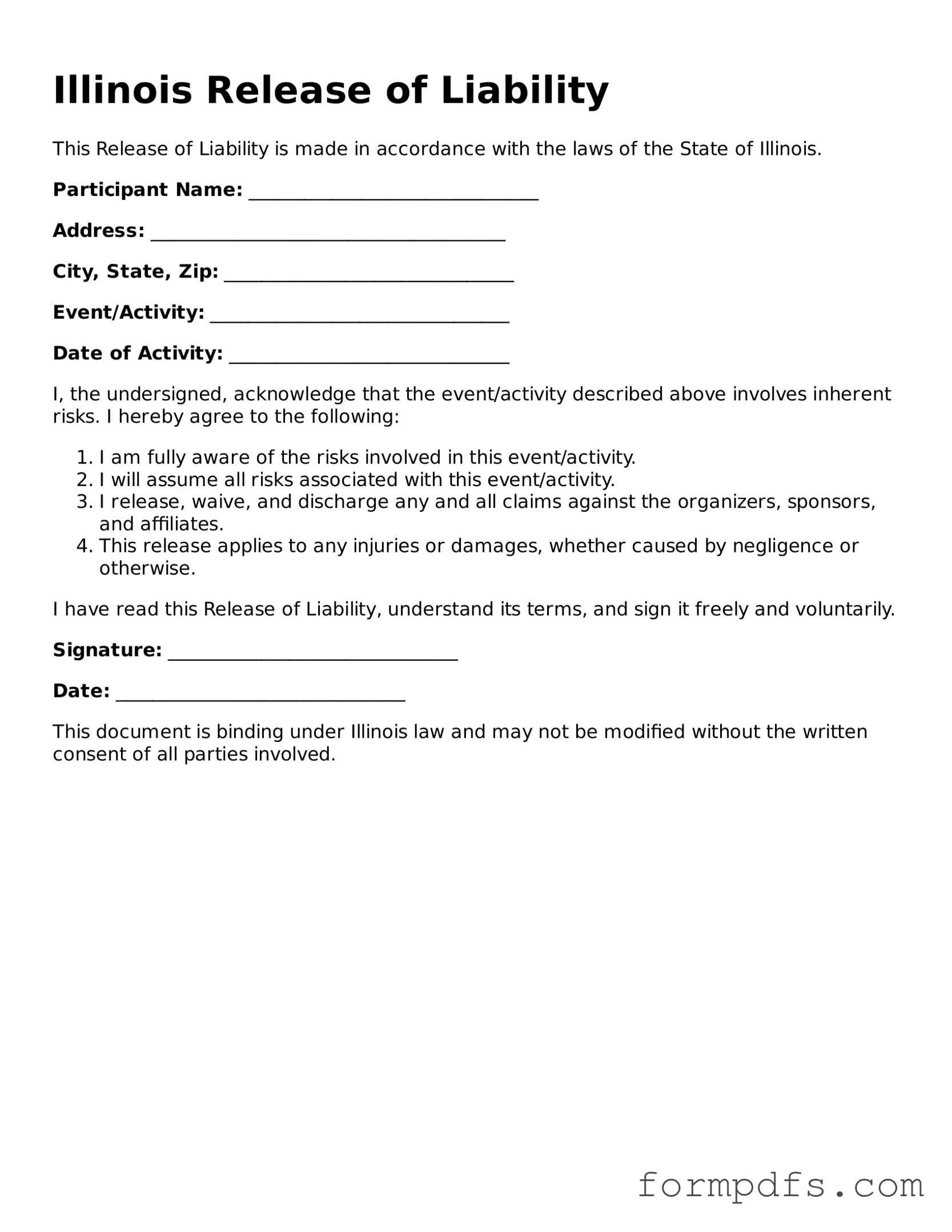What is an Illinois Release of Liability form?
The Illinois Release of Liability form is a legal document designed to protect an individual or organization from being held liable for injuries or damages that may occur during a specific activity or event. By signing this form, participants acknowledge the risks involved and agree not to hold the organizer responsible for any accidents or injuries that may arise.
When should I use a Release of Liability form?
This form is commonly used in various situations, including sports events, recreational activities, and other events where there is a risk of injury. If you are organizing an event that involves physical activity or any potential hazards, using this form can help safeguard against legal claims from participants.
Is the Release of Liability form legally binding in Illinois?
Yes, the Release of Liability form can be legally binding in Illinois, provided it meets certain criteria. It must be clear, specific, and voluntarily signed by all parties involved. However, it’s important to note that certain limitations exist. For example, a release may not protect against gross negligence or willful misconduct.
Do I need a lawyer to draft a Release of Liability form?
While it is possible to find templates online, consulting with a lawyer is advisable to ensure that the form meets legal standards and adequately protects your interests. A legal professional can tailor the document to your specific needs and help address any unique circumstances related to your event or activity.
Can minors sign a Release of Liability form?
Minors cannot legally enter into contracts, including a Release of Liability form. However, a parent or guardian can sign the form on behalf of a minor. This signature indicates that the parent or guardian understands the risks and agrees to the terms of the release for their child.
What information should be included in the form?
A well-drafted Release of Liability form should include the names of the parties involved, a detailed description of the activity, an acknowledgment of the inherent risks, and a clear statement of the release of liability. It’s also beneficial to include a section for signatures and dates to confirm consent.
Can I revoke a Release of Liability form after signing?
Once a Release of Liability form is signed, it generally cannot be revoked unilaterally. However, if there are compelling reasons, such as fraud or misrepresentation, it may be possible to challenge the validity of the release in court. Always consult with a legal professional if you have concerns about revocation.
What happens if someone gets injured despite signing the form?
If an injury occurs, the signed Release of Liability form can serve as a defense against legal claims. However, the effectiveness of the release may depend on the circumstances surrounding the injury. If negligence or misconduct is proven, the release may not hold up in court. Each case is unique, and legal advice is essential in such situations.
How long is a Release of Liability form valid?
The validity of a Release of Liability form does not have a specific expiration date. It remains in effect as long as the activities or events it covers continue. However, it is a good practice to review and update the form periodically, especially if the nature of the activity changes or if new risks are identified.
